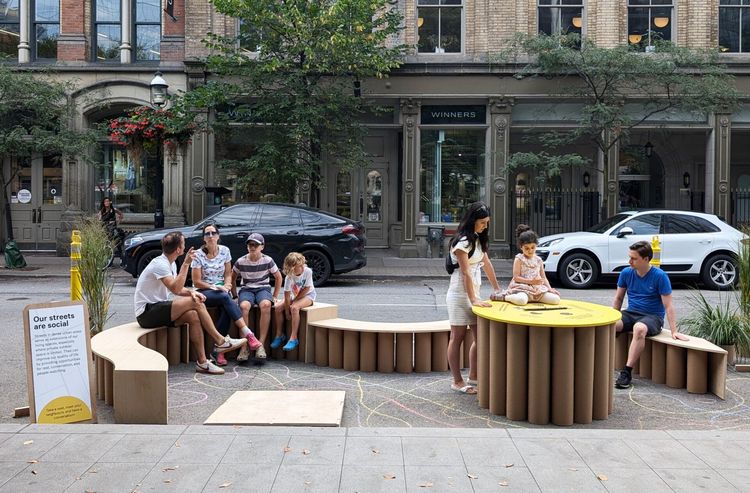
Why CaféTO Needs to Expand Beyond Businesses
Last week, the 2024 CaféTO program cycle reached its conclusion, with curbside patios across the city folding up shop. After becoming permanent in 2023, this year’s CaféTO featured a streamlined application process that has led to a significant increase in commercial participation over previous years; over 1,400 businesses took part.
The initiative is a reminder that while the pandemic brought unprecedented challenges to our city, it also sparked innovation by transforming parking spaces into vibrant outdoor social areas that kept businesses alive and allowed us to socialize safely. The program’s success is worth celebrating, supporting, and building upon — we should expand CaféTO to create opportunities for more than just businesses, so all of Toronto’s citizens can participate. Doing so would improve our well-being, health, environment, economy, and sense of community: transforming our streets into places for people.
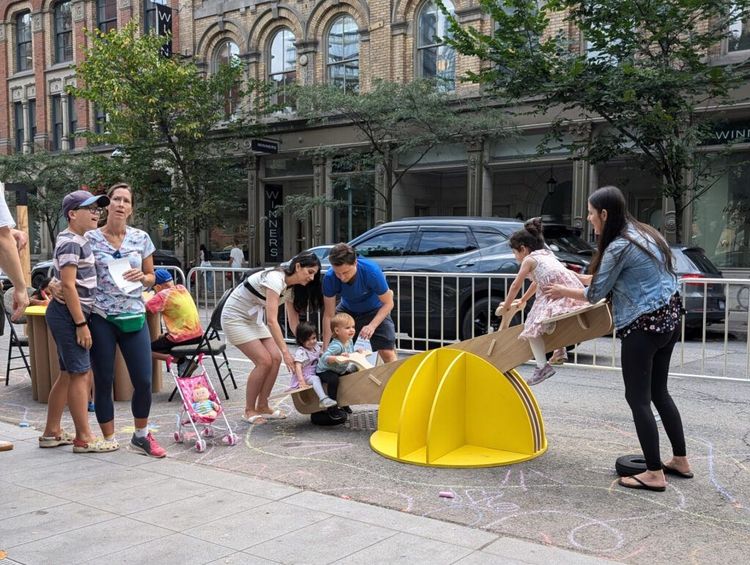
Taking advantage of this potential will rely on sound leadership, empirical evidence, and a firm acknowledgement that streets are public space — our largest by size. Streets cover 25% of our city, more than all the public parks, plazas, and natural areas of Toronto combined. This makes our streets a valuable collective resource that should be fair game for all citizens to use. Instead of prioritizing the fast movement of private cars through our neighbourhoods, our streets should connect us to our neighbours.
Critics are quick to blame street activation programs like CaféTO for our traffic and parking woes; but this is a red herring. Does CaféTO mean less parking space? Yes, but that’s not why you can’t find a parking spot. The root cause is our futile quest to make it easy to drive our cars everywhere in the city. Seventy years of provincial and municipal planning policies and economic incentives have made it so that too many of us need to drive — and park. The only solution is to create an efficient, holistic mobility system.
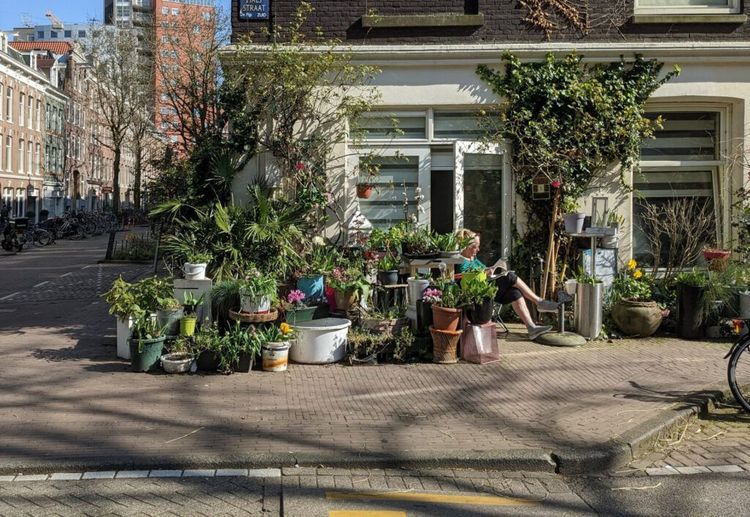
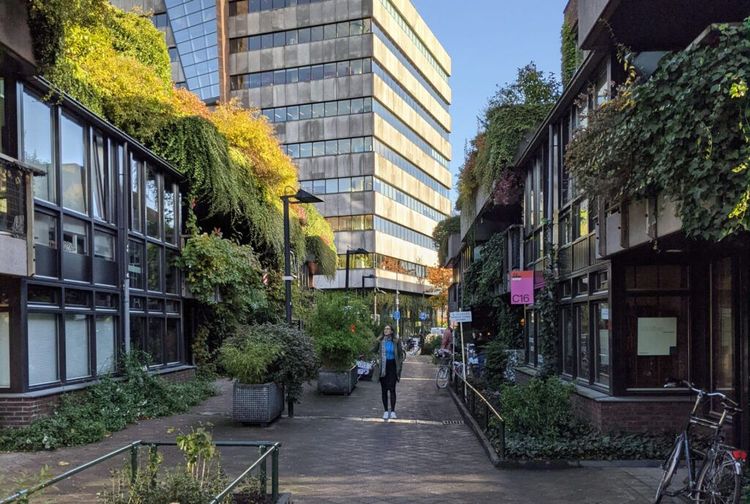
In well-functioning cities, there are diverse ways to move around: driving your private car is an option instead of a necessity. Transit, walking, and cycling are often the most convenient, efficient, and pleasant ways to travel. For instance, up until the 1970s, Amsterdam’s car traffic was as bad as ours is now. But today, the city has one of the best transportation networks in the world for all road users, including drivers. As a result, it also has room for a vibrant public realm featuring plenty of people-focused shared streets, and the huge benefits that go along with them.
Achieving these outcomes required intelligent choices focused on efficiency: compact mid-rise development in all neighbourhoods, well-funded mass transit, and complete networks of dedicated pedestrian and bicycle infrastructure. We’re beginning to choose the same solutions in Toronto. With projects like the GO Expansion, Ontario Line, transit-oriented developments, and bike lanes, our city is improving traffic efficiency, social cohesion, air quality, and our municipal budget all at the same time. We’re also creating the opportunity for better public space, where private cars are accommodated but do not dominate.
Our streets can be places for people, designed to foster community life, build relationships, and express the local culture that our city is famous for. An expanded CaféTO program is a simple first step toward making this a reality for Toronto.
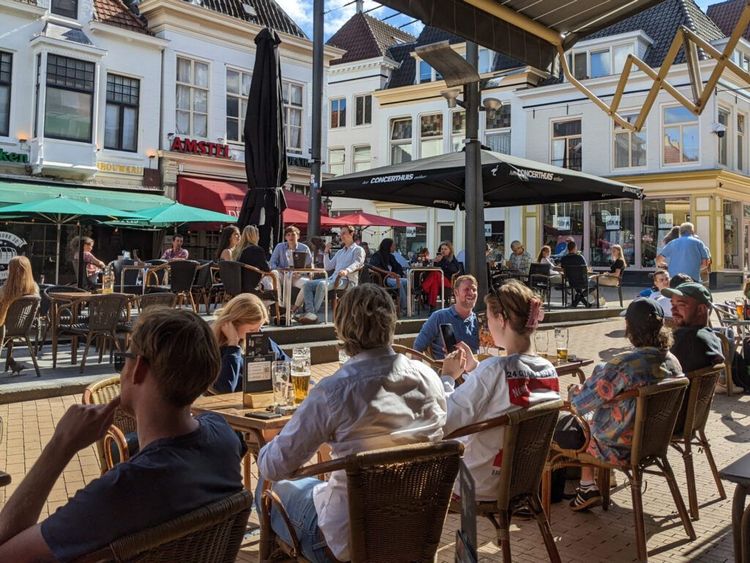
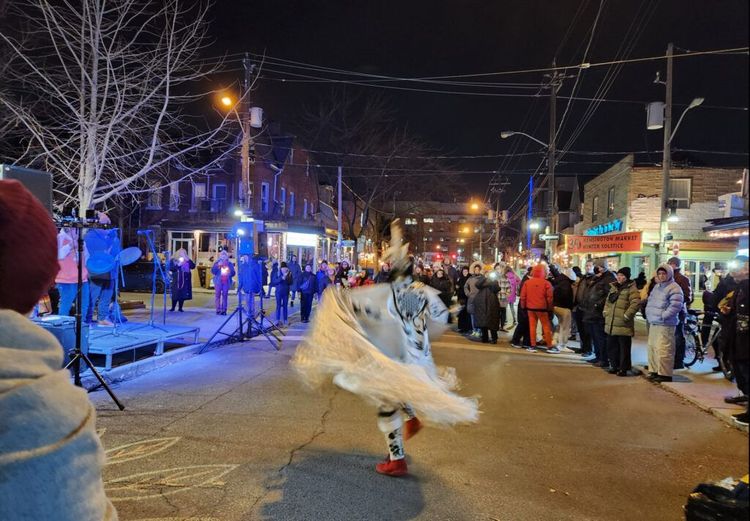
This year let’s go beyond the bars and restaurants on our major streets and avenues; let’s allow residential streets in every neighbourhood to benefit from CaféTO. This could be especially important in underserved communities or in the dense downtown neighbourhoods that lack traditional public space. Imagine a Toronto where:
- All types of businesses can extend into the street, creating pop-up retail spaces, outdoor yoga studios, or open-air reading nooks for bookstores.
- Public institutions like libraries and community centers can program streets into places for educational and cultural events.
- Community groups and resident associations can take leadership roles in shaping their neighborhoods, turning street space into local gathering places for socialization and play.
- Individual residents can extend their living spaces onto the street, expanding their porches and front yard gardens into social areas where they can connect with their neighbours.
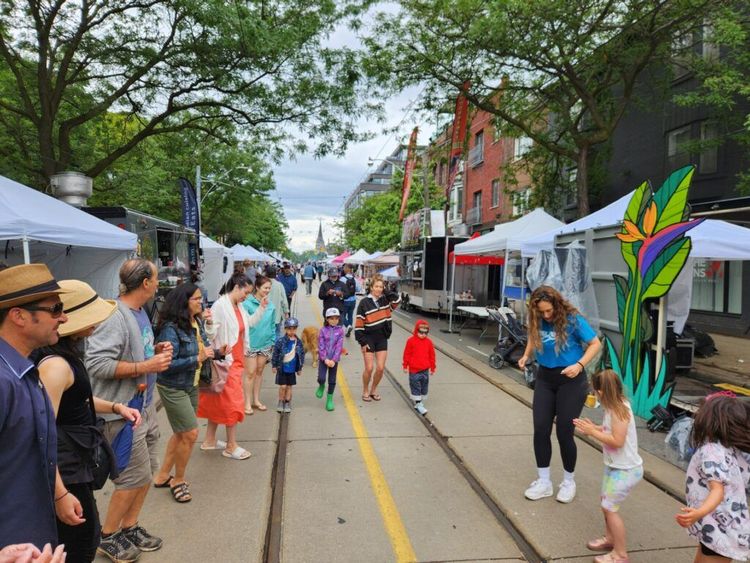
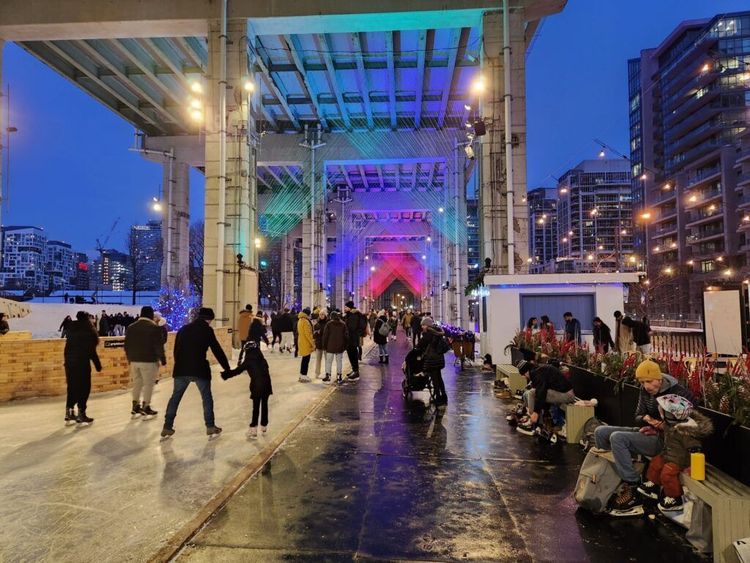
By trusting our community members to use the CaféTO framework to experiment with their street space, we can foster a culture of tactical urbanism — creating small, incremental changes that lead to big outcomes. These transformations are low cost and low commitment; they are quick to implement and easy to adjust or remove if unsuccessful. The CaféTO program already has well-tested safety guidelines and approval mechanisms. Application fees should be minimal for non-commercial uses, but they can also be tailored to address parking revenue losses in specific locations if necessary.
There is little risk and much to gain in expanding the reach of CaféTO. It’s time for us to be bold; the 2025 program should give all Toronto citizens the opportunity to participate. We have a unique window of opportunity to give communities the power to transform our streets into livable, connected, and dynamic places that make life in Toronto better for us all.
This piece is co-presented with The Centre for Active Transportation and is written by Dennis Rijkhoff and David Simor.
Dennis Rijkhoff is an Architect who is driven to address the most critical issues of our time, including climate change, biodiversity loss, and societal inequity. He is a senior associate at SvN Architects + Planners, where he helps lead projects and the firm’s Regenerative Practice.
David Simor is a transportation practitioner (though an actor by training) working at the intersection of transportation, public space, and the social determinants of health. He is Director of The Centre for Active Transportation, an environmental charity that exists to create healthier, more equitable places by supporting communities in creating safer streets for walking and riding bikes.